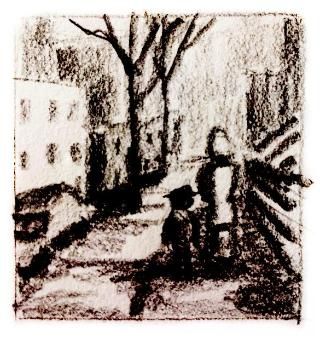Asher Lev Discussion Guide: Part 4

Chapters 10 through 12
Dr. David McNutt (Core Studies)
Now fully committed to his artistic vocation, Asher spends even more time engaged in his painting and learning from Jacob Kahn in these chapters. Meanwhile, “a permanent high wall of uncertainty and hostility” (275) has developed between Asher and his father.
- Jacob Kahn tells Asher that he has lost the ability to pray; instead, he talks to God through his sculpture and painting (252). Asher suggests that his art can also be a form of prayer. Do you agree that art can be a form of prayer? If so, does that mean that any activity can be an example of prayer? What, then, is prayer?
- Asher is repeatedly warned about the dangers of participating in art and the art world. Like Asher’s father, who wasn’t sure if his gift was from the Master of the Universe or the Other Side, even Jacob Kahn says that he is unsure if it is demonic or divine (263-4). But Asher still decides to become a “great artist” (265). What do you think has led to this decision?
- Jacob Kahn argues that Asher must become a great artist because that is “the only way to justify what you are doing to everyone’s life” (278). Will artistic greatness and success justify the pain that Asher is causing?
- When Asher visits a Jewish museum, he says that he found “no art” there, only crafts (281). Do you think that there is a difference between “art” and “craft”? If so, how would you articulate it?
- Asher reveals his own definition of art when he tells his father that he expresses his feelings through his paintings: “That’s what art is, Papa. It’s a person’s private vision expressed in aesthetic forms” (303). Is that what art is?
- Asher’s exposure to and education in modern art increases rapidly with his visits to shows featuring work by Van Gogh (272), Brancusi (285), Matisse (297), Giacometti (298), and Braque (298). Meanwhile, after a summer of painting, he returns without his sidecurls (299). How would you describe the relationship between his art and his faith at this point in Asher’s life?
- Although he hesitates, Asher ultimately decides to show nude paintings at his shows. But Asher’s father won’t attend the show if there are nudes. Is this a sign of disrespect? Independence? Both?
